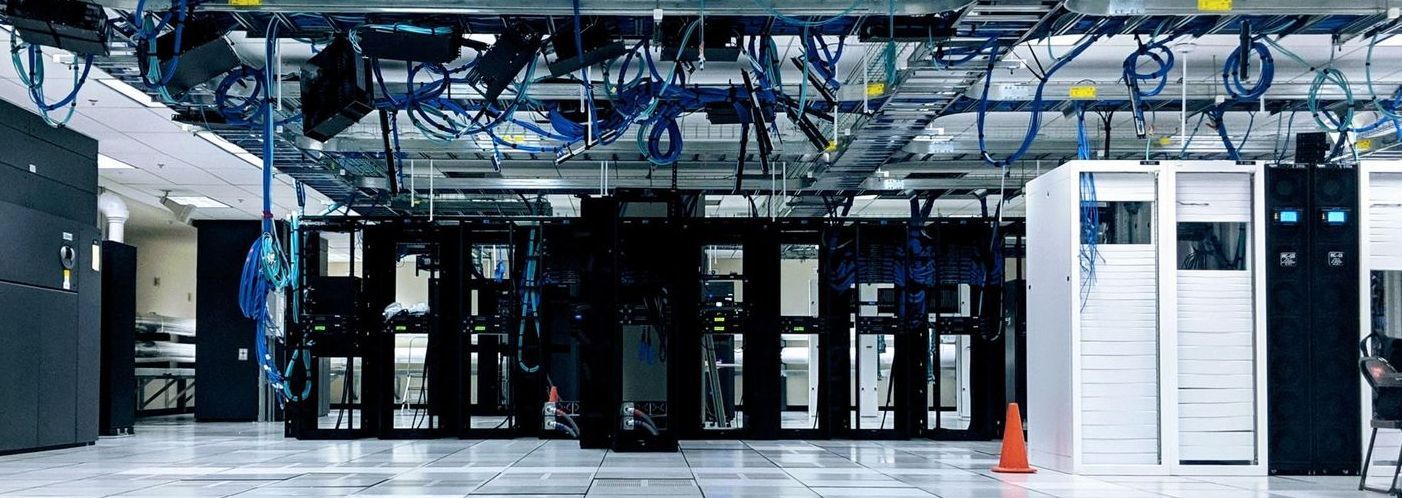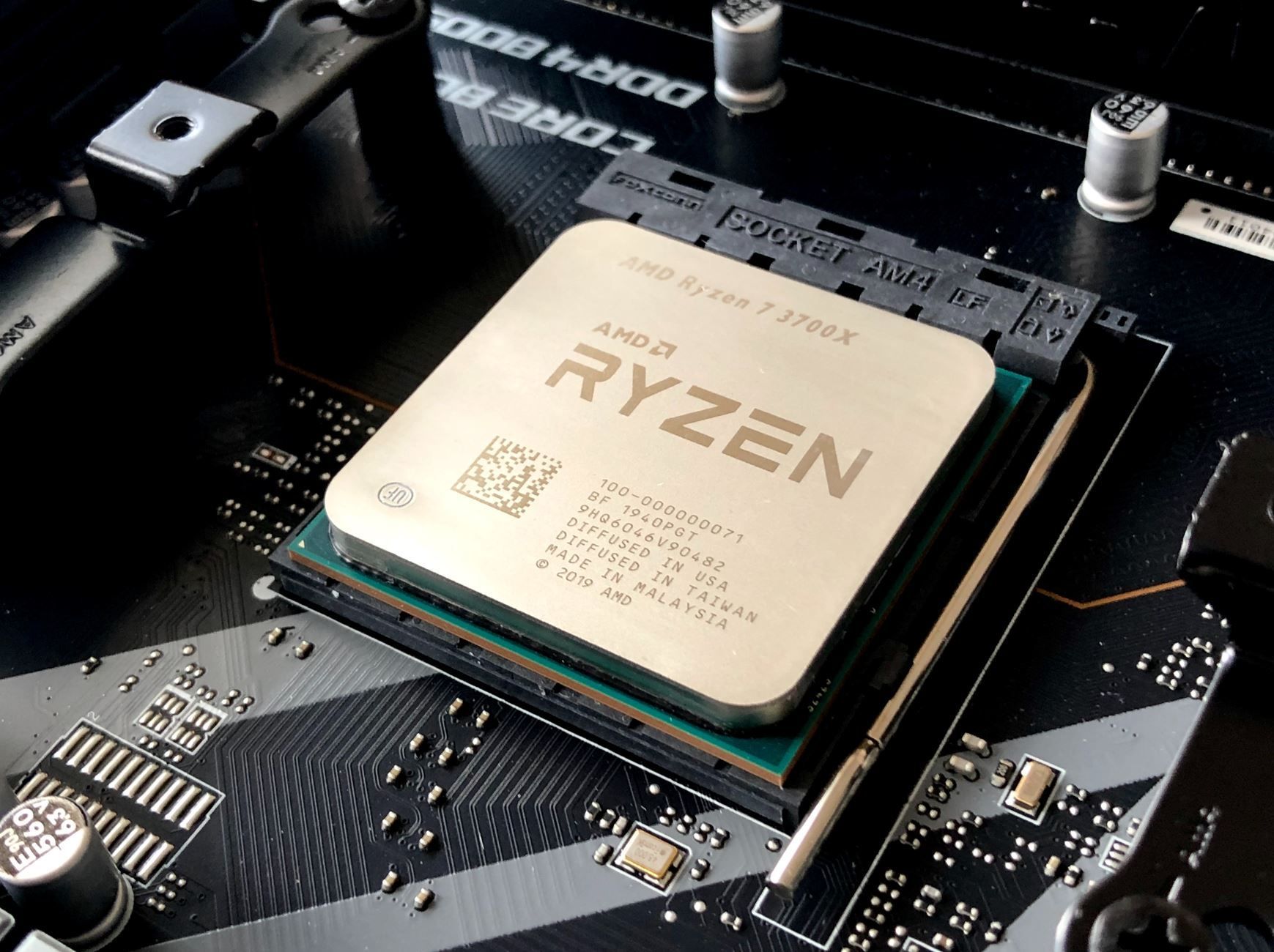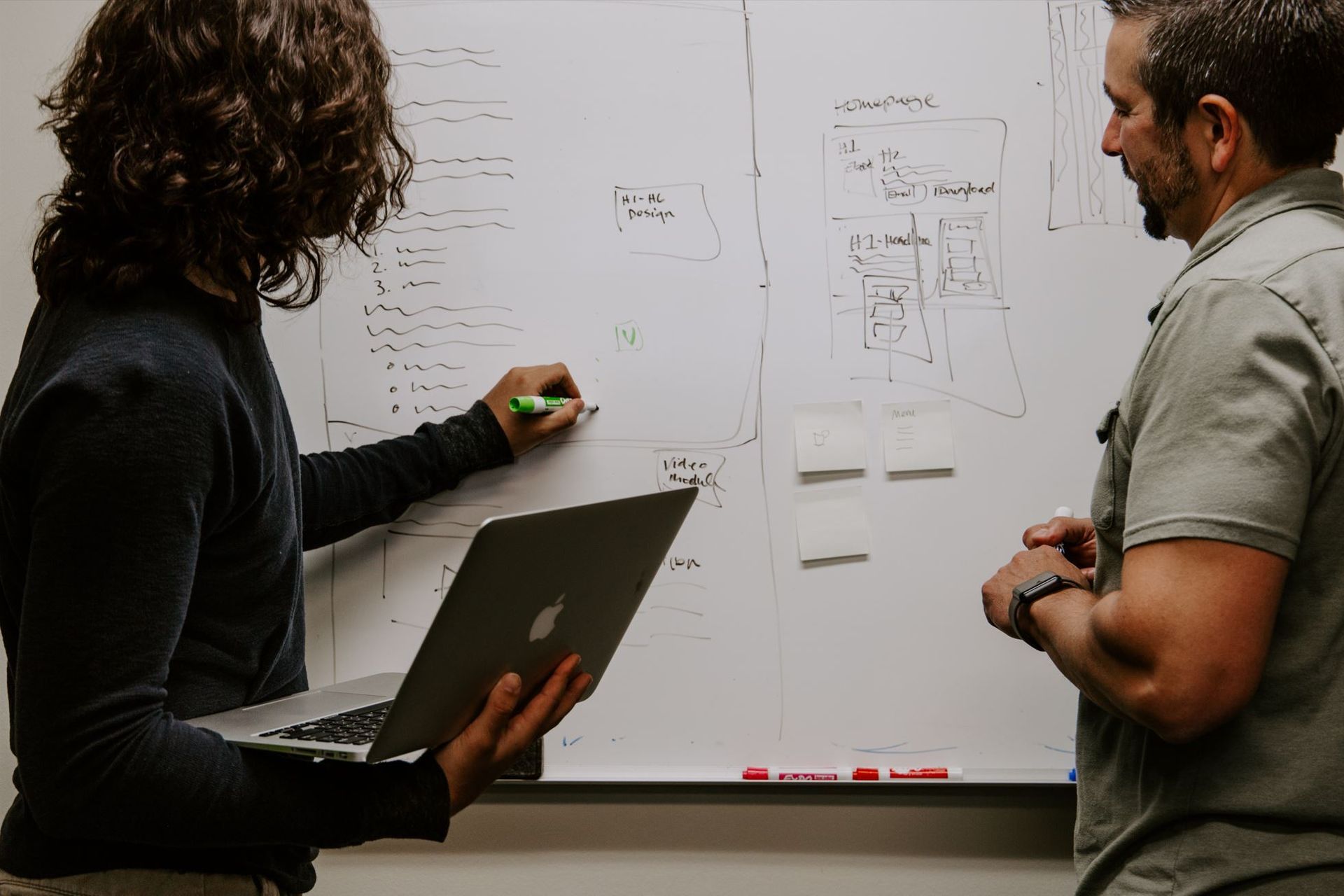A Deep Dive: Planning A Centralized Computing Firm
Take a Deep Dive Into Planning Out A Firm That Provides Centralized Computing Solutions

This post has been slightly adapted to a blog post from an APA paper written by the author. Download the APA paper here!
Executive Summary ~1 min
This paper-turned-blog post provides an in-depth examination of starting a centralized computing firms and their feasibility from a client's perspective. Centralized computing is a model where a remote server handles the computer operations, offering significant benefits over traditional computing setups in terms of cost-efficiency, environmental sustainability, and enhanced data security.
Three primary methods of centralized computing setups are discussed – Fat clients, Thin clients, and Virtual machine setups. Fat clients store data locally, offering flexibility but not capitalizing on the core benefits of centralized computing. Thin clients, on the other hand, are more secure as they rely on a central server to store and access data, reducing the chances of data theft or malware introduction. Virtual machine setups offer a single-server solution that can dynamically adjust computing power and RAM according to user needs, providing a seamless experience when integrated with peripheral devices.
A comprehensive cost analysis indicates that a centralized computing setup can offer substantial savings over traditional setups. The example used compares a centralized computing solution built around a powerful 3990x CPU with multiple Dell OptiPlex workstations. It demonstrates that the centralized solution can serve twelve workstations at a lower cost than the Dell workstations, resulting in a savings of $332.32 per employee on the workstation setup alone. Furthermore, centralized solutions consume less power, thereby reducing operational costs and promoting environmental sustainability.
Despite the apparent advantages, potential drawbacks of centralized computing include increased risk of downtime and decreased redundancy due to the dependence on a single server. However, the benefits outweigh these challenges, especially for businesses planning to set up large amounts of workstations.
The business plan discussed involves catering to businesses setting up a new location or looking to refresh their digital solutions. Sales strategies encompass traditional methods and an e-commerce approach, powered by AWS for optimal uptime. Furthermore, it addresses the ethical aspect of centralized computing, focusing on its environmental benefits due to lower power usage and less e-waste generation.
Lastly, this paper provides a blueprint for setting up a firm offering centralized computing solutions. This includes an open-office layout promoting cross-team collaboration, resilient power and disaster recovery plans, and the use of robust software like Monday.com for internal resource needs.
In conclusion, centralized computing represents a cost-effective, environmentally friendly solution for businesses to offer computing capabilities to their employees. The establishment of a firm providing centralized computing solutions seems promising, offering value to clients and contributing to a sustainable business environment.
A Deep Dive: Planning A Centralized Computing Firm ~8 min
Centralized computing is when a centralized computer or server, typically some distance away from the user, is utilized in order to perform the functions of a computer instead of a device sitting right next to a user performing these actions. There are three main ways for companies to set up centralized computing, which is to use fat clients, thin clients, or virtualize desktops and have no local user device. This paper will look at the viability of and if centralized computing is even worth it from a client perspective.
Ways To Setup Centralized Computing
Fat Client Setup
A fat client is a computer which can store data locally and does not rely on the server to function as a place to store or access data. Everyone is familiar with fat clients, as most computers are fat clients, almost everyone’s personal laptop or desktop is configured as a fat client because you are able to read and write files and data off of the storage device attached to the device. These can be used in centralized computing applications, but centralized computing is not needed as the local devices can perform their own workloads locally and do not need external computing or storage. Firms should instead set up network attached storage devices for this type of implementation as this will allow these devices in the local area network to access shared data with other computers also on the network.
Thin Client Setup
Thin clients are computers that are set up in such a way that they cannot store data locally on the device, but instead rely on the centralized server in order to store and access data. This is a safer form of setup since individual computers cannot store local data, it is harder to have data stolen and malware introduced into the environment since the machines cannot download and then run these files on the machine. Since everything is encrypted and password protected on a centralized server behind firewalls, this makes data much more secure.
Virtual Machine Setup
With no local machine at a desk, this setup is instead reliant on category cables which communicate all of the data to and from the server which virtualizes a desktop on it for use. By allowing everything to be done on one single server, you can make machines dynamic, adding and removing computing power and ram as needed to allow other users to utilize it. To provide a seamless experience, users will need to plug everything into a hub which allows them to have inputs for keyboards, mice, USBs, and any other device they would normally plug into their computer. As well as providing outputs for things such as monitors, speakers, and headphones.
Centralized Computing Solution Vs Traditional
Cost of Systems
The cost of our primary competitor, the Dell OptiPlex, is $899 (Dell, 2022) and includes all of the internals that are needed for an employee to work at their desk provided they already have a keyboard, mouse, and monitor(s). Since a keyboard, mouse, and monitor(s) are required for each setup, they will not be factored into the math as it would be the same cost on top of the systems themselves.
The Dell OptiPlex that is currently priced at $899.00 has an Intel i5-12500 which is a 6 core, 12 thread processor with integrated graphics, 16 GB of DDR4 RAM, and a 256 GB NVMe SSD. This is a good workstation and will more than be able to handle the average office workload for many years to come.
The system that we will be configuring as the centralized computing solution will be a 3990x which has 64 cores and 128 threads, octa-channel 256GB of ECC RAM, a 3070Ti which will be able to handle all of the graphics outputs for these virtual workstations, and 4TB of m.2 NVMe SSD storage. This is a great system that will be able to provide 12 roughly equivalent virtual workstations via virtual machines, with 5 cores and 10 threads per instance with 4 cores of overhead to run the system managing it all. The total cost of this system breaks down as follows: $3,450 for the CPU (Ehrhardt, 2020), $1,093.12 for the ECC RAM (New Egg, 2022), $599.00 for the GPU (Best Buy, 2022), $478 for the 4 TB of m.2 NVMe storage, $79.95 for the CPU cooler (New Egg, 2022), $144.99 for a power supply unit (Amazon, 2022), and $954.08 for the motherboard (Amazon, 2022). This comes to a total cost of $6,800.13 which is better than the Dell OptiPlex’s total price for 12 workstations at $10,788 for a comparable, and in some cases arguably better computer setup. This is a savings of $3,987.87 in total, or $332.32 per employee for just workstations alone.
Cost of Connectivity
Dell OptiPlexes have zero additional costs for connectivity since the machine is already at the worker’s desk. This in addition to having the connectivity to the local area network being a requirement for both, meaning the costs would be the same for both. Meanwhile, for the centralized computing solution, a docking hub is needed to connect the inputs and outputs of the machine in the virtual world to objects in the physical world. This can cost around $150 per workstation and would likely need to be further developed as a proprietary system that our company would implement. Another low-cost solution would be to use Raspberry Pi 3s as the connection between the desk and the servers. These would be configured as thin clients who do not have their own desk space, as they would instantly log into the virtual machine assigned to it on the server. A new Raspberry Pi 3 B+ costs $35 (RaspBerry Pi, 2022) and would allow for a workstation to operate seamlessly as if the virtual machine was at the desk of the employee.
Total Costs for Setup
The total cost for setup for a Dell OptiPlex is $899 per workstation and that is the only cost involved with implementing a new system as the only thing required to scale is buying more computers. This is in stark contrast to centralized computing where you build a large system that can handle multiple workstations at once, and once you pass around 15 users, you will want to look at adding another system or going towards a system with multiple CPUs and GPUs on one motherboard made by custom system integrators. Another benefit of centralized computing is the amount of power consumed is much less. For 12 Dell OptiPlexes, those can take around 135W each to run at idle being a total of 1,740W for 12, while the centralized computing solution uses around 600W for these same 12 systems. This not only saves energy, but the heat that will be offput by these systems which will result in either more uncomfortable employees, or a higher air conditioning bill.
Break Even Point for Customers
The value that this solution provides customers will ultimately depend on how many workstations they are looking to implement. While a company with a single workstation will not benefit from spending thousands for this solution and would be better off with a single Dell OptiPlex, those with multiple may benefit. As long as a company is looking to set up eight or more workstations, this makes sense as the same amount of OptiPlexes would cost $7,192, being $391.87 more than the centralized computing solution. This solution is even more cost appealing considering the savings and environmental aspect of saving energy and generating less e-waste.
Drawbacks of Centralized Computing Solutions
Some drawbacks to centralized computing solutions are less redundancy, and potentially increased downtime. With only one computer actually doing the work in an organization instead of multiple computers working on tasks individually, there is an increased chance that if the server has an error, needs an update, or a part breaks then your entire company may go down as a result without backup servers. This of course is true of many companies, as their main server is typically the lifeblood of their company, but if you also have every workstation on a single device, you could lose access to the server without the sever going down but instead the centralized computing solution going down.
Business Plan
Customers
Our primary customers will be businesses that are setting up a new location or are looking to update and refresh their office’s digital solution(s). Not only will we build and sell the systems that are required for our customers, but we will also offer an installation and set-up service that will allow them to place their order and forget it, as we will perform all of the steps necessary to go from their current set up to a new, centralized computing solution. After we set up their office space, we will offer them the service of continuing maintenance that can be done remotely, updating their servers and being able to administer the system to add on, reset, delete, or reconfigure systems with more/less cpu, gpu, or ram allocation.
Sales Avenues
Not only will our company conduct traditional sales methods, but we will also have an e-commerce offering where clients are able to buy our completed systems. We will use Your Brand Online’s custom website builder, which has an integration with Ecwid and Avalara for e-commerce, shipping, order tracking, and tax needs, for both our company’s main website as well as our e-commerce store. Using AWS’s servers for hosting, we will be able to ensure top-tier availability and uptime to our website and online store to our clients. Our company will be taking this dual approach as it is most likely to result in success, our sales team will outreach to people who are ready to implement such systems, and our marketing team will work to drive people to our site who are ready to buy, creating new, hot leads.
The Ethics of Central Computing Setups
There are little to no ethical issues with this business as we are creating less e-waste, saving our customers money, and converting over to something more power efficient. As this does nothing but benefit all of those involved, there are no legal or ethical issues to address. If anything, we will be able to bring this up to others as it being unethical to go with a solution other than centralized computing as it is overall better for the environment.
Internal Business Systems
Office Setup
The way that our office will be set up will be an open layout where employees will feel free to talk to each other to increase creativity and help them come up with ideas which could help our business. We will Monday which will allow us to communicate seamlessly with each other as well as plan out our work together. Our workforce will consist of a sales team, a customer service team, a remote management team, an internal IT team, a marketing team, and an installation team.
We will use a centralized computing solution of our own all connected through Cat-7 cables which will allow for fast communication. To prevent downtime and recover in the case of a disaster, we will have enough battery backups in our server room to last long enough for us to set up a generator that we will keep in order to power the offline systems for long enough for the power to come back online. For disasters, we will have offsite cold backups of our data which will be backed up every day. In the case of a disaster, we will use a cold storage provider which will be able to quickly convert it to a hot storage setup where we will be able to remotely access our data and have employees work from home if needed.
Software Integration
We will use Monday.com for all of our internal resource needs as they offer a CRM, work management software, a marketing collaboration tool, a project management tool, a development collaboration tool, and more which all seamlessly integrate into each other and is a simple to learn and use platform. With all of these teams using specialized versions of this software that seamlessly communicates with the systems of other teams which are specialized for them, we will be able to maintain high levels of cross-team communication to work more effectively and efficiently.
Conclusion
Centralized computing can be a cost-effective, environmentally friendly way for companies to provide a computer to their employees. By moving the heat generating device away from the employee, as well as decreasing the amount of heat input into the environment by decreasing the amount of power consumed, companies can decrease their costs while increasing the comfort of employees and environmental sustainability through the use of less power with not only device usage, but also with lowered air conditioning usage. The creation of a firm which provides a centralized computing solution would most likely be seen as a value-add to clients and therefore would be a good business to create.
Thank you for reading my blog post! If you found any of this information helpful or know someone who would find it useful, please share it with them. Let me know what you think in the comments below. Consider joining my mailing list to keep learning as I continue to add value with more blog posts and articles about topics such as Information Technology Management and Marketing.
Once again:
This post has been slightly adapted from an APA paper to a blog post written by the author.
Download the APA paper here!









